What is Last Mile Delivery?
Last mile delivery is the final phase of the delivery process in which a parcel is transported from a transportation hub to its final destination, which is typically a personal house or retail outlet.
This is the most important phase in the delivery process, and organizations want to make sure it happens as quickly and efficiently as possible. This is to meet the ever-increasing customer demand for expedited shipment, particularly in the e-commerce, food, and retail industries. It is also the most expensive part of the route for commodities to their final destination.
5 Key Steps in the Last Mile Delivery Process
The last mile delivery process can be broken down into the following five steps.
Step 1: Digital orders are input into a centralized system.
Here, requests and orders are watched over by the sender as well as the final receiver, who is probably using a tracking number to find out how their delivery is doing.
Step 2: Orders reach the hub for transportation, where they wait to be delivered to the intended recipient.
Businesses must make sure the order is delivered to the client as soon as possible from the transportation hub, since here is where the last mile delivery process really starts.
Step #3 Delivery staff are assigned orders based on recipient addresses and routes.
A successful last-mile logistics solution for delivery depends on carefully classifying and designating the packages for delivery.
Step #4: Before being put onto delivery vans, orders are scanned.
This allows the receiver to trace the shipment and updates the sender’s order status. It lessens the possibility that items in packaging may be misplaced during transit.
Step #5: After successfully reaching the intended receivers, orders are verified as delivered.
The package has reached its destination at this point. The delivery staff then makes the necessary modifications to the tracking data to ensure that the delivery has been accomplished.
You Might Also Like To Read: What Is Reverse Logistics?
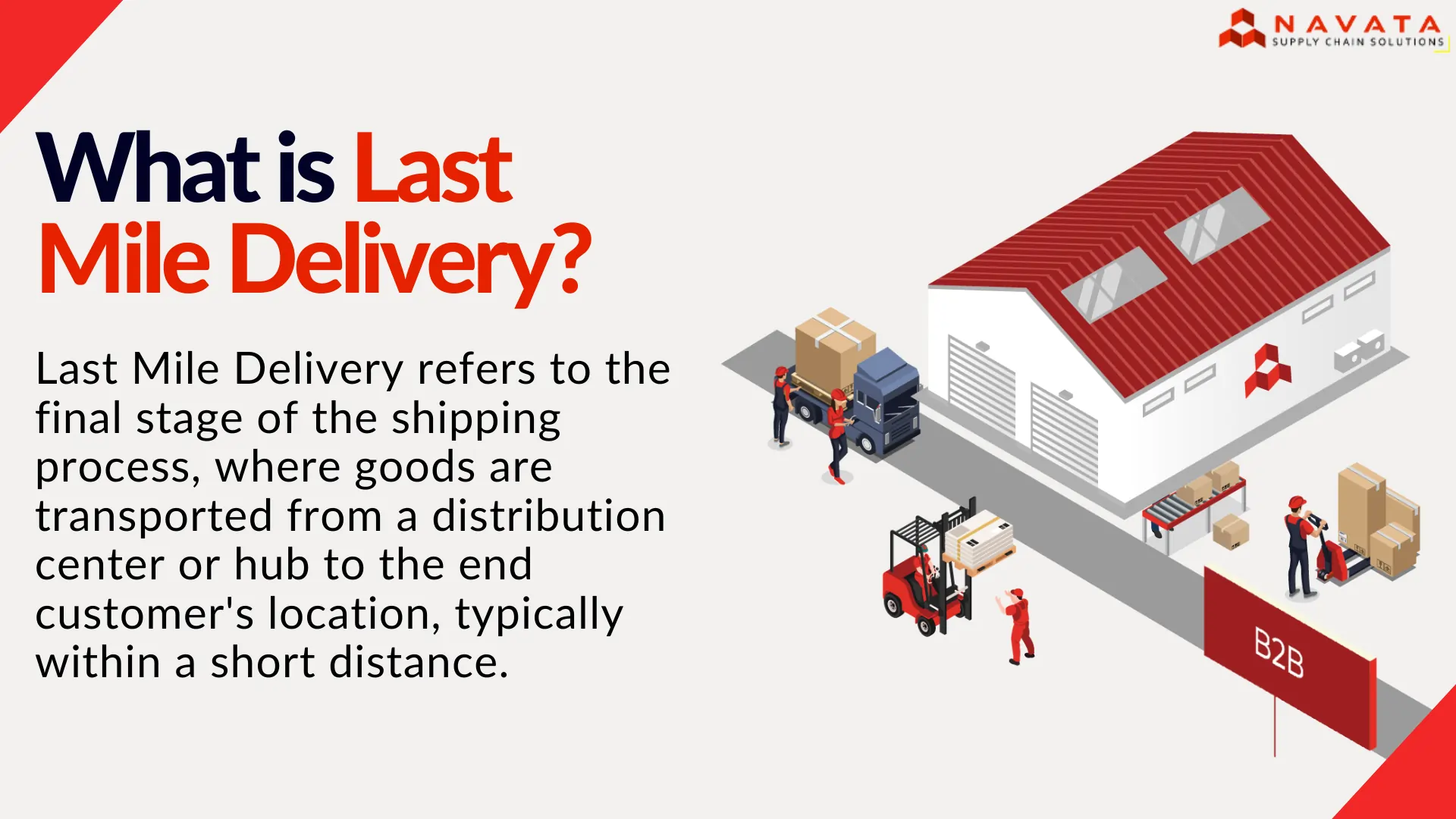
Importance of Last Mile Delivery in the Modern Economy
Faster delivery and more convenience
With last-mile delivery, customers may enjoy the convenience of having their shipments delivered right to their door and make purchases more quickly than they would if they had to drive to a store or other specified pickup location. Delivery times are accelerated by last-mile delivery, which frequently starts at a retailer’s local distribution facility.
Boost income and sales
Businesses that provide prompt and trustworthy delivery services have a higher chance of attracting and keeping customers, which increases sales. Businesses may see an increase in sales and income if last-mile delivery enables them to offer delivery services to isolated and rural locations. This is because they will have easier access to new customers.
Boost productivity
By using less time and resources during delivery, last-mile deliveries may help businesses operate more efficiently. Retailers may reduce administrative work and physical labor by using automation and digital technology, which will improve delivery operations’ efficiency and save costs.
Components of Last Delivery
Final Mile Delivery
The final mile delivery is the most crucial part of the whole shipping process. It’s the last leg of the journey, where your package travels from a warehouse or distribution center directly to your home. Companies want this stage to be as quick and smooth as possible, ensuring your order arrives on time and in good condition.
Customer Satisfaction
Customer satisfaction is all about providing a positive experience. This means giving clear updates on where your package is, having deliveries arrive when promised, and offering friendly service from drivers. When customers are happy with their delivery experience, they’re more likely to shop with that company again.
Cost Efficiency
Companies aim to make deliveries cost-effective to save money. They look for ways to optimize routes, making sure drivers take the shortest and most efficient paths. They also choose vehicles that are the right size for the job and work hard to avoid any delays that could add extra costs.
Environmental Impact
Deliveries can have an impact on the environment, especially with the use of fuel-powered vehicles. Companies are becoming more aware of this and are exploring ways to make deliveries more environmentally friendly. This could involve switching to electric vehicles, planning routes to reduce fuel consumption, or using other innovative solutions to lessen their carbon footprint.
Also Read: 7 Steps to Choose the Best 3PL Provider for Your Business
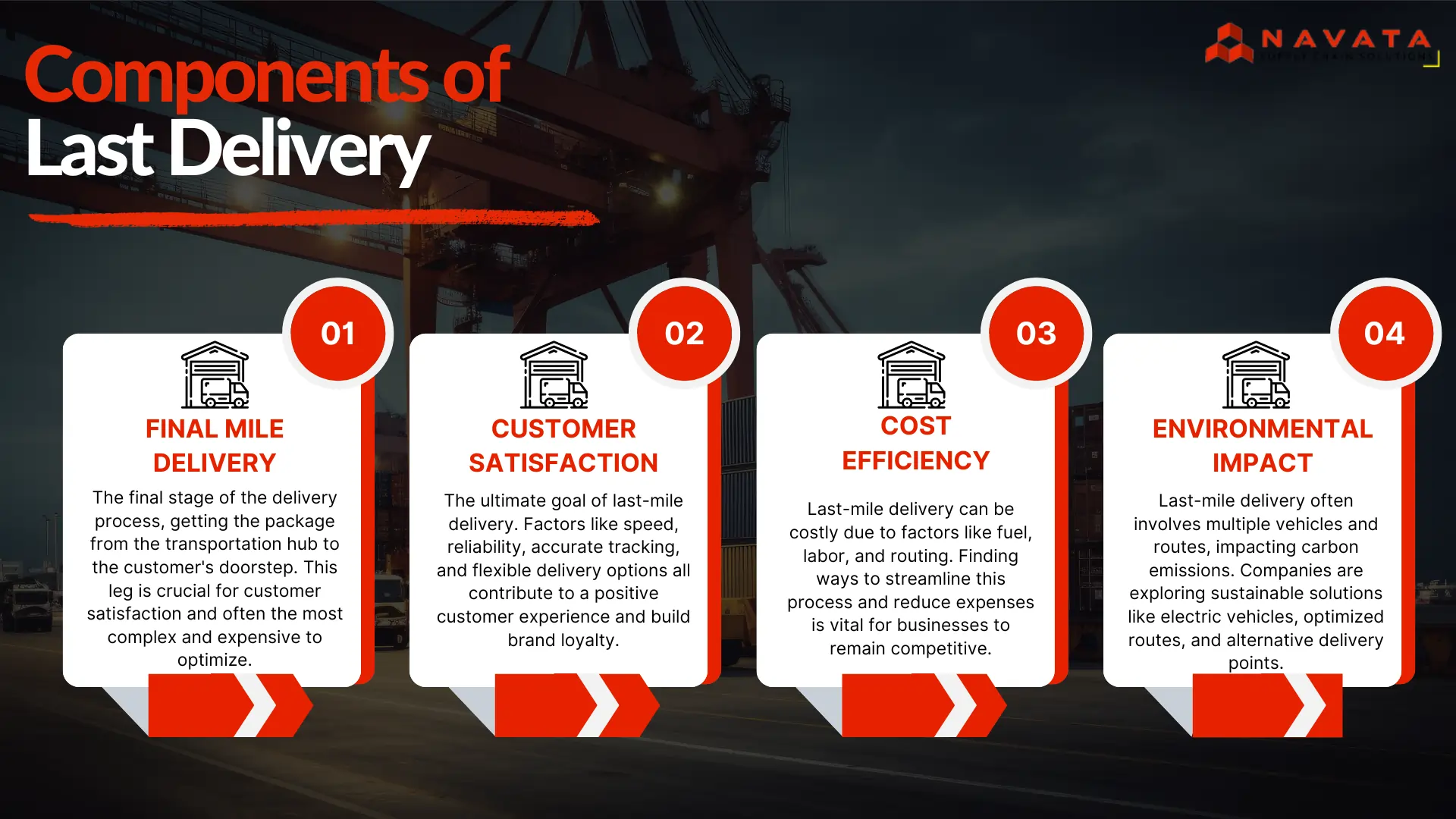
Challenges in Last Mile Delivery
Traffic Congestion and Urbanization
Busy roads and crowded cities make it tough for delivery drivers to get around quickly. Traffic jams cause delays and make it harder to meet delivery deadlines. Cities can be a maze of streets, making it tricky to find the right addresses.
Cost Optimization and Efficiency
Deliveries can be expensive, especially that last stretch to your door. Companies have to figure out how to keep costs down. This means finding the smartest routes, using the right-sized vehicles, and making sure deliveries are done efficiently.
Customer Expectations and Experience
Customers want their packages fast and on time! They expect clear updates on where their orders are and appreciate friendly service. It’s a challenge to always meet their high standards and provide a great delivery experience.
Environmental Concerns and Sustainability
Delivery trucks and vans use fuel and contribute to pollution. Companies are trying to make deliveries more eco-friendly. They’re looking at using electric vehicles, finding fuel-saving routes, and coming up with creative solutions to reduce their environmental impact.
Also Read: Top 6 Trends In Last Mile Delivery
Latest Trends In Last Mile Delivery
Route Optimization and Tracking Systems
Route optimization and tracking systems are like super-powered maps designed for delivery drivers. The technology helps find the absolute fastest routes while avoiding traffic congestion. Customers benefit too, with the ability to track their packages in real-time, offering a similar experience to watching your food delivery arrive on an app.
Automation and Robotics
Automation and robotics are becoming more common in last-mile delivery. Robots are assisting with the rapid sorting of packages within warehouses and may even help with actual deliveries. They bring speed and efficiency, saving time for companies and potentially speeding up deliveries for customers.
Drone Delivery and Its Potential
The idea of packages delivered by small flying robots sounds like something out of the future, but drone delivery is becoming a reality. Drones have the potential to make deliveries lightning-fast, especially in congested urban areas. While there are still regulations to be worked out, the concept of drone delivery is thrilling.
Artificial Intelligence in Last Mile Logistics
Artificial Intelligence (AI) is acting like a super-smart brain for last-mile logistics. It can analyze data to predict when customers will be home, optimize routes for maximum efficiency, and even figure out the best way to group packages together to save time on deliveries.
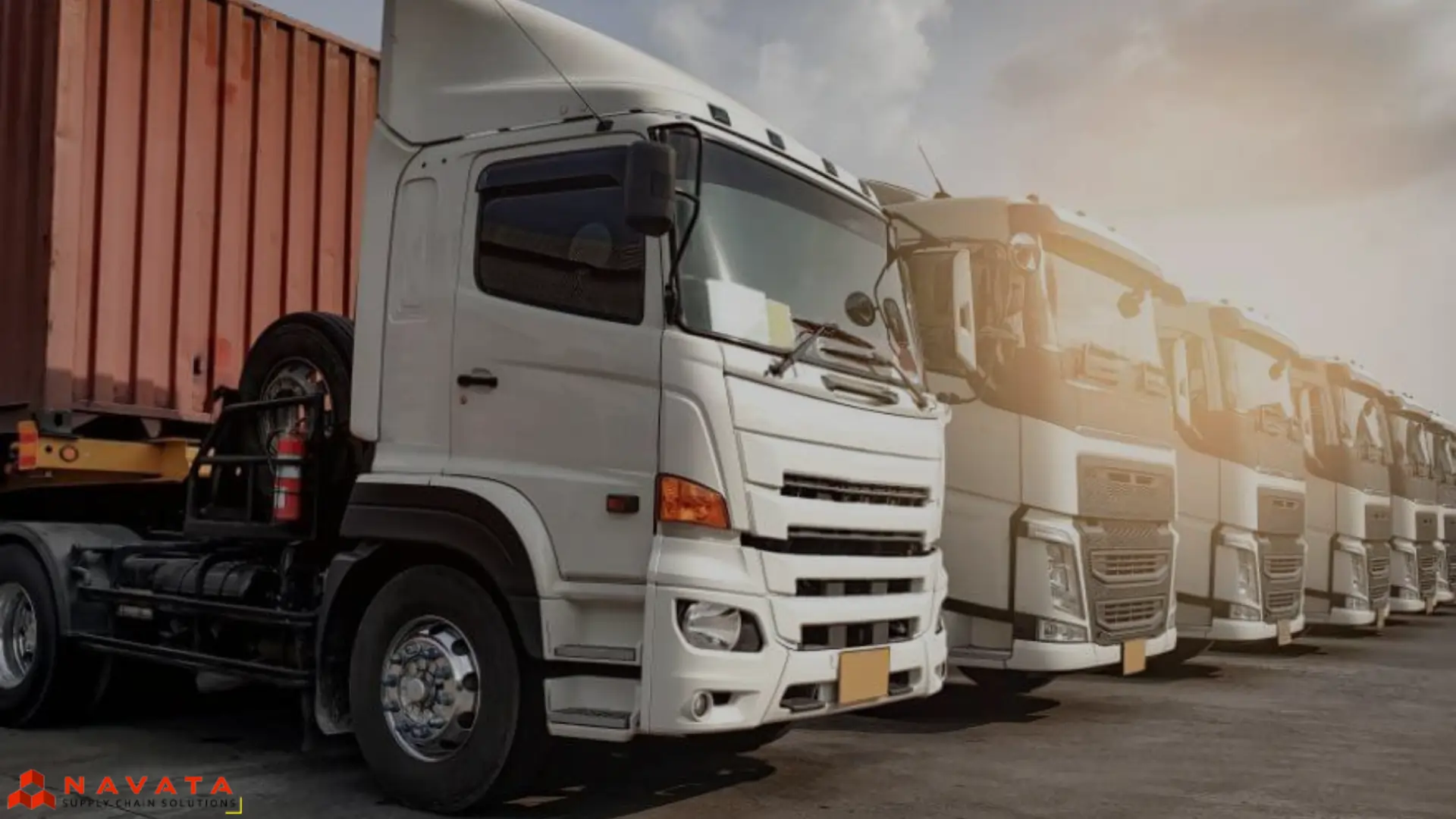
Thanks For Reading: What is Last Mile Delivery?
Powered By 360Presence
FAQ
Why is last mile delivery important?
Last mile delivery is crucial as it enhances customer satisfaction by ensuring prompt deliveries, boosts sales by reaching remote areas, and improves operational efficiency.
What is the impact of last mile delivery?
Last mile delivery has a positive impact on customer satisfaction through faster service, increased operational efficiency through optimized routes, higher sales due to expanded market reach, and environmental considerations through sustainable logistics practices, all of which are critical for gaining a competitive advantage in modern commerce.
How can businesses optimize last mile delivery routes?
Businesses use smart mapping tools to locate the quickest and most efficient delivery routes, minimizing traffic congestion. They also choose vehicle sizes that are appropriate for the delivery task to reduce expenses and increase overall efficiency.
Why is last mile delivery important?
Last mile delivery is important because it ensures fast deliveries, which make customers happy. It helps businesses reach more customers, even in remote places, boosting sales. It also makes delivery operations smoother and more efficient.
What are the latest trends in last mile delivery?
The latest trends in last mile delivery include leveraging route optimization and tracking systems for efficiency gains, adopting automation and robotics to streamline operations, exploring drone delivery innovations for speed, and integrating AI to enhance logistical decision-making and customer service.
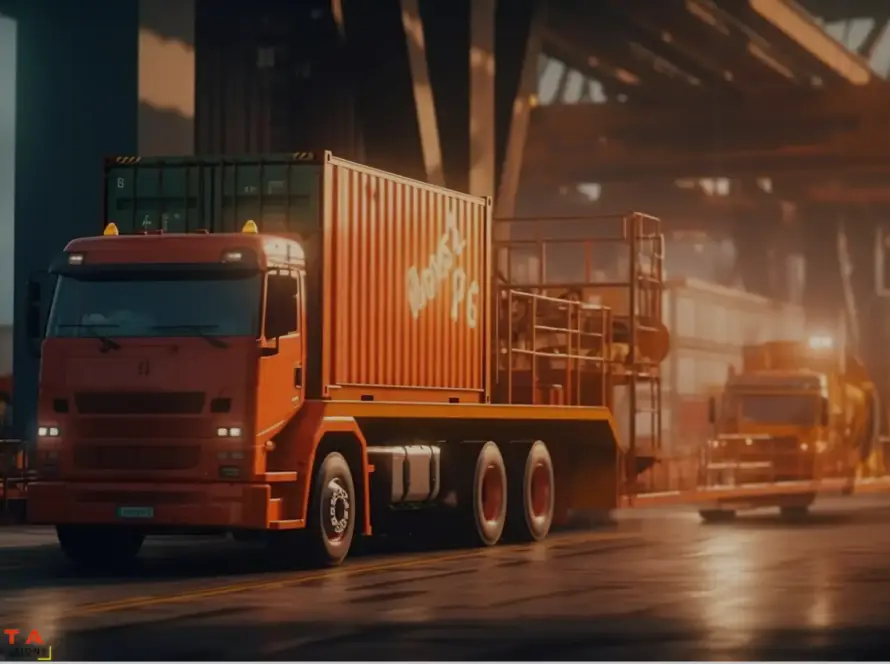
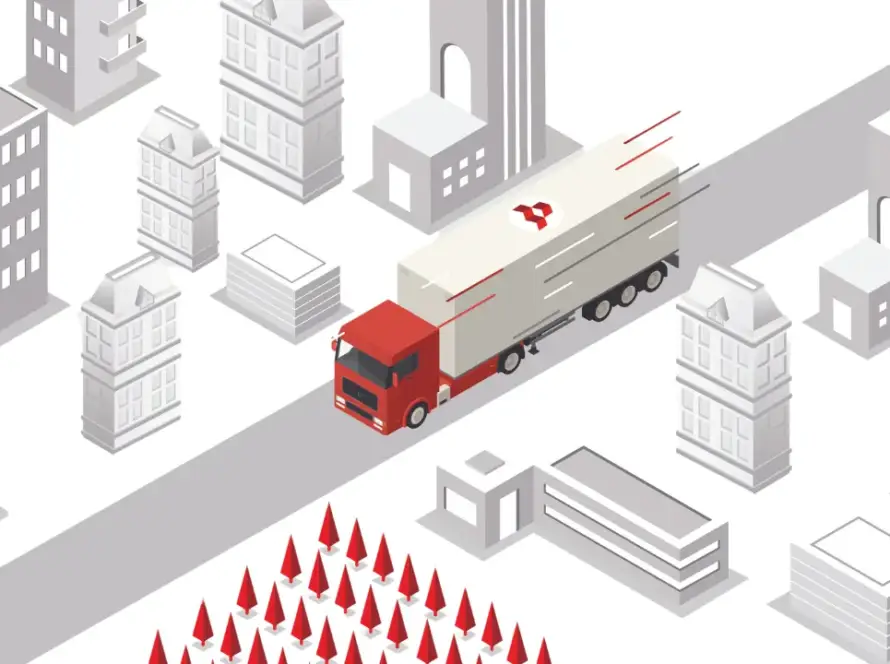
2 Comments
Rosetta
I am sure this article has touched all the internet people, its really really fastidious
piece of writing on building up new website.
Demetra
Hi there, yup this article is really nice and
I have learned lot of things from it concerning blogging. thanks.